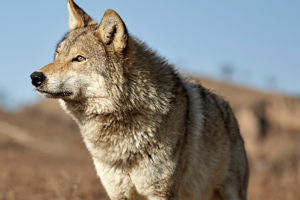Zebras are named for their conservation marks. Few animals are more distinctive than a zebra's fur. A zebra's stripes are the same as human fingerprints, not exactly the same. Zebras are an African specialty.
Plains zebras of eastern, central, and southern Africa, with striped or unstriped legs from leg to hoof.
The habits of zebras.
Herd animals.
They forage together and even groom each other's fur. But the group is usually small, at most about 10, mostly female animals and male and female cubs that have not reached sexual maturity.
Cry.
When foraging, group members take turns serving as guard duties. When there is danger, a long hissing warning signal will sound. The zebra stopped eating immediately and ran away quickly.
Food.
Zebras are herbivores. The main food is grass, and sometimes young leaves are also eaten, and it has a strong digestive system.
Why haven't zebras been tamed?
1. Wild animals are hard to tame.
Although zebras are herbivores, their temperament is very fierce, which is related to their living environment. After all, zebras live on the African savannah.
Not only big cats such as lions and leopards, but also hyenas. So if you want to survive, you must learn to fight.
It is this cruel living environment that makes zebras vigilant and aggressive, which makes them difficult to domesticate.
2. Preconceived.
The earliest rideable animal domesticated by humans was the donkey, which was domesticated from the African wild ass. The domestication time was about 7000 years ago, the earliest domestication occurred in Egypt.
After the donkey was domesticated, in addition to carrying goods, it was also the main riding tool for people.
3. Habits.
Zebras are gregarious herbivores. Communication between their members relies mainly on various telephone calls, which makes them very fond of barking and growling. The sound is a bit like a donkey, but more harsh than a donkey.
When domesticated, they also growl at a high frequency. This habit is really unacceptable.
What do the stripes on a zebra do?
1. Adapt to the environment and protect yourself.
In open grasslands and deserts, the zebra's black and white stripes reflect different light in sunlight or moonlight, acting to blur or distract the contours of its body, keeping enemies away.
In this way, the zebra can reduce the chance of being discovered by the enemy, so as to achieve the purpose of protecting itself.
2. Identification among the same kind.
Different species of zebra have different markings, some are thick and sparse, and some are thin and uniform. These patterns are actually zebra logos, and they identify their species through their markings.
Do you know how many zebras are alive in the world now?


